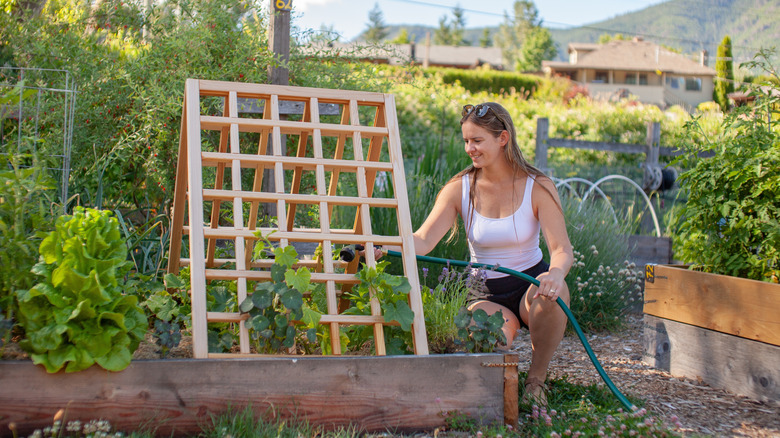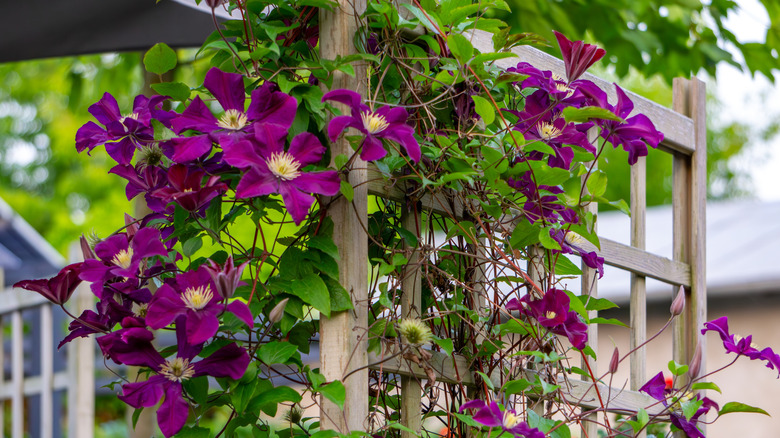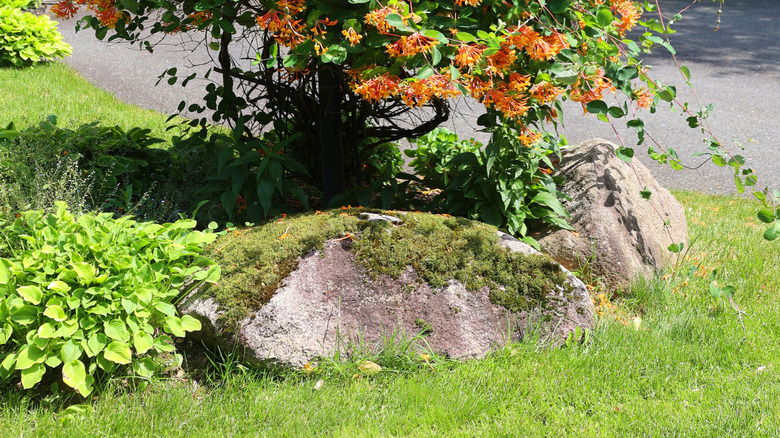A Beautiful Climbing Perennial That Should Never Be Planted With Your Edibles
There's one climbing perennial that should never be planted alongside your edible plants, no matter how tempting it may be to let its vibrant blooms mingle among your herbs or vegetables. Hidden behind its long vines and large, showy flowers is a serious risk. There's something you should know before planting clematis (Clematis spp.). Every part of this pretty vine is toxic to humans and animals. The plant contains a compound that irritates skin and causes gastrointestinal distress if ingested.
Clematis is part of the buttercup family. Plants in that family contain ranunculin, a chemical that releases a toxin called protoanemonin when the plant is crushed or damaged. Since vining clematis is perennial, this isn't a short-term issue. Choosing where to grow this vine is a long-term decision that can affect every harvest season for gardeners unaware of its toxic traits. Clematis vines are beloved for the drama they add to cottage or vertical gardens. However, the possibility of the plant's sap getting onto greenery intended for the table is what makes it risky to have in your edible garden. If you choose to have clematis in your garden, there are other, more suitable places to plant it.
Why clematis should be kept away from edible gardens
Clematis is one of several climbing plants that'll effortlessly blanket your yard with color. However, clematis vines climb by twisting their leaf stalks around nearby supports, a habit that can entangle them with nearby plants. When parts of the plant are damaged, they release a blister-causing compound, which can transfer onto nearby surfaces. In an edible garden, this can create an invisible hazard. The poisonous sap may end up on lettuce leaves, tomato skins, or herb stalks without you noticing.
The risks go beyond ingestion of the plant's parts, which can cause vomiting, diarrhea, or painful mouth irritation. Clematis sap can cause dermatitis on contact with the skin, leaving some gardeners with painful rashes if they handle the vine without protection. Dried plant material is mostly safe because the toxin has broken down. In living vines, the compound remains active. Clematis should never be planted near edibles or in areas where children and pets might brush against the foliage or accidentally consume its leaves.
Safer spots for clematis and alternative vines
These reasons are why the best place to plant clematis in your garden is in non-edible parts of the landscape where it can climb. Decorative borders or trellised entryways are ideal locations. Clematis flowers attract bees, butterflies, and even hummingbirds. Planting them in pollinator gardens lets you enjoy their benefits without the risks to your harvest.
While clematis may tempt with its beauty, it's best for ornamental corners of the garden, far away from children and animals who may touch or eat the plant. Wear gloves while handling the plant to protect your skin, and plant it thoughtfully so you can enjoy its flowers without compromising your harvest. In the right spot, you can keep this climber in your garden.
For gardeners who want vertical color in their edible beds without the risk, safer alternatives exist. Native trumpet honeysuckle (Lonicera sempervirens), for example, offers unique spikes of bright blooms without toxic sap in USDA Hardiness Zones 4 to 9, which negates the risk of cross-contamination. Other non-toxic climbers are available, too, such as star jasmine (Trachelospermum jasminoides), which can add wonderful visuals to gardens in Zones 8 to 10.


